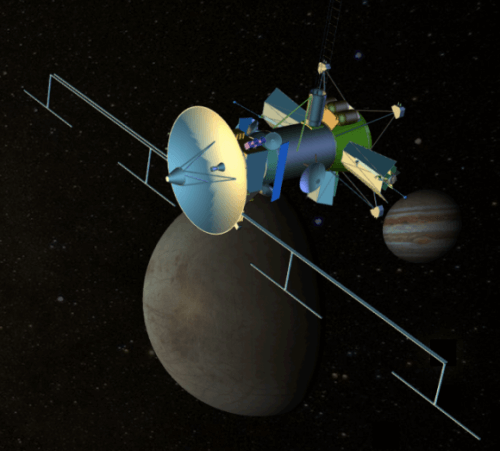NASA and MIT scientists propose building an altimeter out of simple but radiation-hardened electronic components to build a 2022D map of Europa from aboard the Europa-Clipper spacecraft to be launched in XNUMX

Europa Meet the mineral-rich interior of the moon.
However, since scientists cannot dig through the ice, they must rely on data transmitted by spacecraft passing by the moon. A proposed mission to NASA known as Clipper may be sent to Europe in the next decade - and researchers from MIT and NASA are seeking to upload their device to the spacecraft.
Planetary scientist Gregory Newman from NASA and his colleagues are considering sending a laser altimeter, a device that sends signals to the surface in the field of infrared radiation and creates a three-dimensional image with the information returned to it. Laser altimeters have already proven useful for close-up observations of Mars, Mercury, and our moon, and Newman and his team are hard at work designing one for Europa-Clipper.
The spacecraft is planned to observe Europa from orbit around Jupiter. Over a three-and-a-half-year period, it will pass by Europa 45 times and gather information about the geology, atmospheric chemistry and tidal fluctuations, sometimes referred to as ice tectonics.
"Altimeters are an excellent tool for measuring tectonic changes" says Newman. "You can measure the surface of the height down to the level of the last centimeter. "Laser altimeters may complement the cameras on board the spacecraft and add to them the necessary information to create a three-dimensional map of the entire surface of the moon. Newman even hopes to observe plumes of water like those discovered by the Hubble Space Telescope in 2013. "The estimate is that we will be lucky and see at least one such eruption."
However, researchers cannot just build a replica of an altimeter that has already been used in space missions. Each planetary body has risks of a different kind. For example, the altimeter on the Messenger spacecraft orbiting the planet Hema must survive temperatures of 430 degrees Celsius - the heat on the planet Hema during the daytime, while the temperature near Europa is around minus 160 degrees.
The spacecraft must also survive the high temperatures required to sterilize it of all life forms on Earth in case it crashes on the moon. In addition, a spacecraft orbiting Jupiter must meet the conditions prevailing in Jupiter's radiation belt, which is a million times stronger than that orbiting Earth.
"The electronics must be as simple as the ones in the first Radioshake computers" says Newman. "But they were hardened against radiation so they could work in this environment."
There is no certainty that the laser altimeter developed by the crew will be put on board the Caliper when it is launched, in 2022 at the earliest. This device is just one of dozens of proposals competing for limited space in the spacecraft. But Newman is not afraid. "Our offer is excellent" he said. "We are the best."
Carrie Klein, a science communication student at the University of California, Santa Cruz, wrote. Published on the AGU (American Geophysical Union) website
